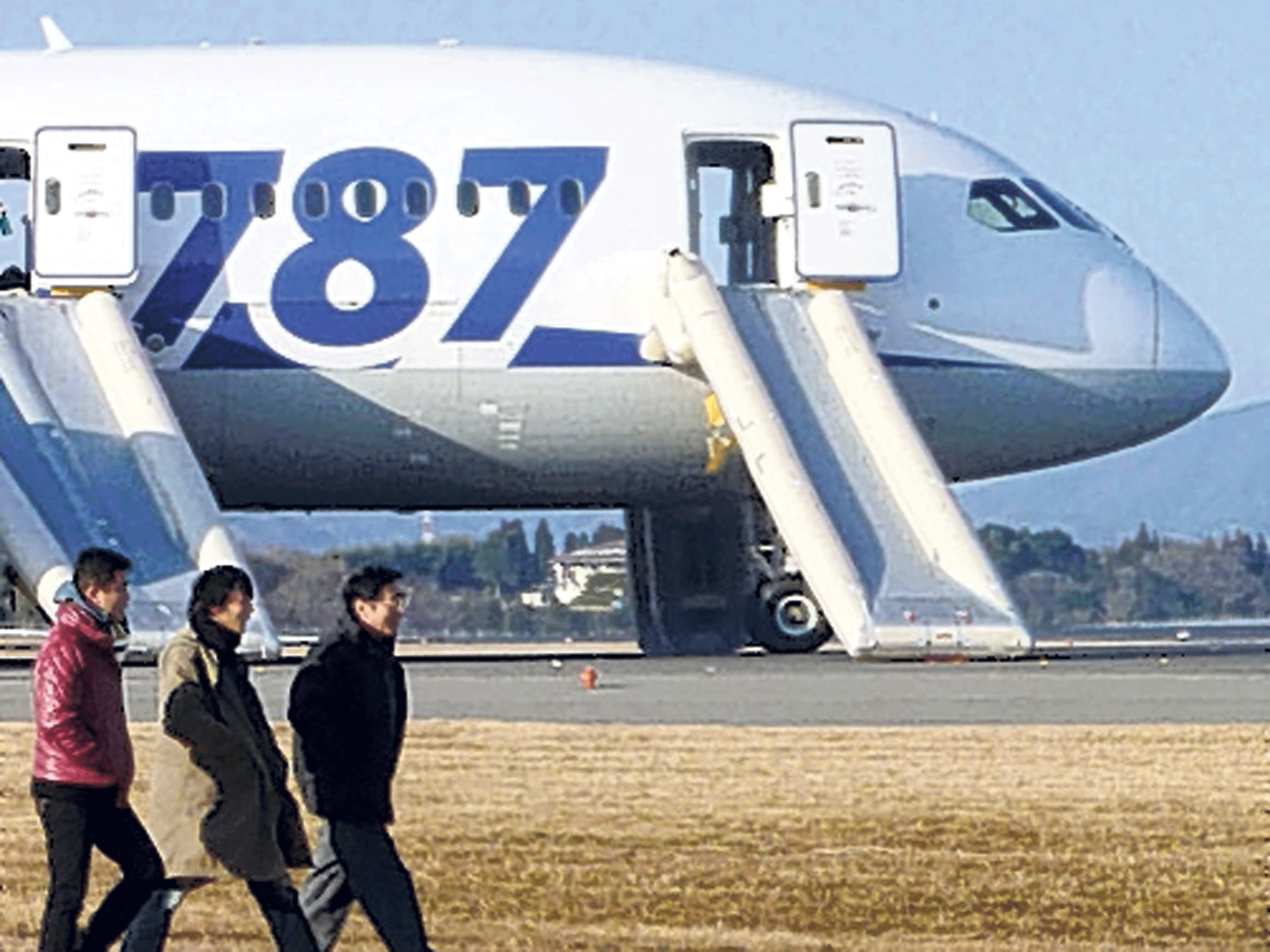Simon Calder: Dreamliner - don't fret about the jet, yet
The man who pays his way

Your support helps us to tell the story
From reproductive rights to climate change to Big Tech, The Independent is on the ground when the story is developing. Whether it's investigating the financials of Elon Musk's pro-Trump PAC or producing our latest documentary, 'The A Word', which shines a light on the American women fighting for reproductive rights, we know how important it is to parse out the facts from the messaging.
At such a critical moment in US history, we need reporters on the ground. Your donation allows us to keep sending journalists to speak to both sides of the story.
The Independent is trusted by Americans across the entire political spectrum. And unlike many other quality news outlets, we choose not to lock Americans out of our reporting and analysis with paywalls. We believe quality journalism should be available to everyone, paid for by those who can afford it.
Your support makes all the difference.You might think that the first rule of flying would be: "Get airborne." In fact, the prime design principle for the commercial airliner is that it can be evacuated quickly on the ground. We passengers, often disparagingly known as "self-loading freight", can easily take half-an-hour to board a plane, but are expected to self-unload within 90 seconds.
Every passenger aircraft, up to the largest in the shape of the Airbus A380, has been tested to ensure up to 853 passengers and a couple of dozen crew can clear the jet within a minute and a half of the captain ordering an emergency evacuation. The train, bus or car in which you will travel this weekend will not be so rigorously regulated. And next time you are in a mid-sized theatre, imagine that performance – with the added complication of a long slide to the ground.
The rules for getting everyone off the plane in an almighty hurry exist because of the often tragic consequences of fire aboard aircraft. Smoke and fire have claimed far more travellers' lives than terrorism – with many fatalities involving otherwise survivable crashes. Many lessons were learnt from the last fatal accident involving a British Airways jet, in 1985. As the Boeing 737, accelerated along the runway at Manchester, destination Corfu, it suffered an uncontained engine failure that started a fire. Tragically, 55 passengers and crew perished as the aircraft burned on the ground.
The grounding this week of the Dreamliner was down to the fear of fire, not due to the other snags that have afflicted the Boeing 787. While nervous flyers might not agree, the odd fuel leak, cracked cockpit windscreen and brake issues that the Dreamliner has suffered comprise run-of-the-mill teething problems.
Given the revolutionary design of the 787, there were always going to be more issues than on other new aircraft. But the lithium battery failure that caused heat damage and smoke on two Japanese-owned Dreamliners is an order of magnitude more worrying. "These conditions, if not corrected, could result in damage to critical systems and structures, and the potential for fire," said the US air authorities when they issued an emergency airworthiness directive grounding the plane. Safety agencies in Europe, India, Japan and Chile quickly followed suit.
Super shuffle
Your involvement with lithium-ion batteries is probably the same as mine: we ignore them, until they run out at a critical moment. So far, neither my lithium-powered laptop nor my mobile phone has spontaneously combusted, but if either did I would move a safe distance away until the danger subsided. In flight, where every moment is critical, this is not an option. And so all Dreamliner operations have stopped.
Travellers booked on 787s in the near future face problems. Not only will the alternative be less comfortable (and harsher on the environment), it could also involve a longer flight. Dreamliner owners are shuffling their fleets as they try to find substitute jets – and pilots to fly them. Some can replace the Dreamliner with a similar-sized plane, such as a 767 or A330, but spare aircraft are expensive assets to keep standing around and are strictly finite. Some departures are being downsized, such as United flights in the US, where 737s are among the replacement. Others are simply being cancelled: passengers booked on Japan Airlines' San Diego-Tokyo are finding that their reservation has gone west, yet they haven't. Qatar Airways, the only carrier operating the jet from the UK, has cancelled the daily flight to Doha.
Few other British travellers are, so far, affected because no UK airline has the aircraft. That is due to change next month, when Thomson takes delivery of its first Dreamliner. The jet enters service on 1 May with a 9.15am departure from East Midlands to Cancun. "We are still working to our original delivery dates," the company says, but I bet, behind the scenes, Thomson is also working on contingency plans.
Boeing's pride slides
So, is it time for 787 passengers to head for the nearest available exit? No. The world's best aeronautical engineers and safety officials are working flat out towards a swift and effective solution. There is no lack of incentive to find one. The airlines are losing £20,000 per plane, per day, for as long as the grounding drags on. The cost for Boeing is inestimable. Few sights in aviation are less dignified than a brand new aircraft standing forlorn and flightless – particularly on the runway, with its evacuation slides deployed.
For more on the 787 grounding: bit.ly/787QA
Join our commenting forum
Join thought-provoking conversations, follow other Independent readers and see their replies
Comments